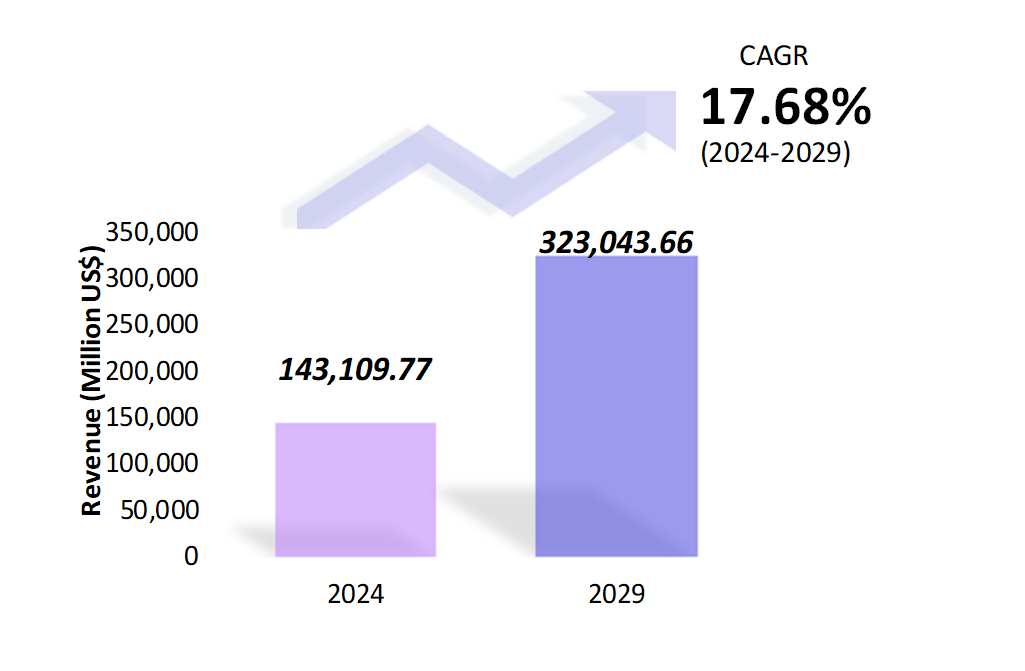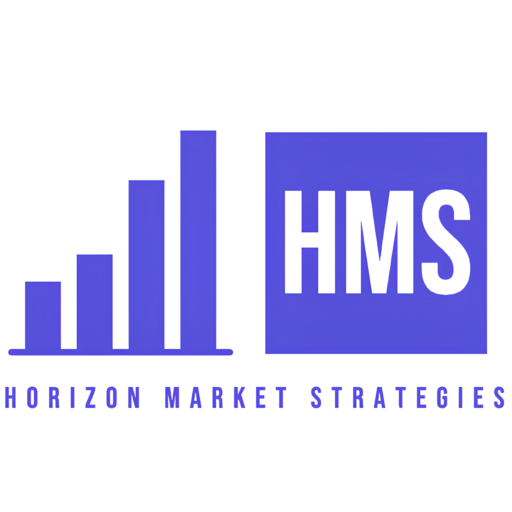3D Display Market Outlook: Size, Share, Trends & Growth Analysis (2024-2029)
The market report offers a detailed analysis segmented by Product (Volumetric, Stereoscopic); by Technology (Digital Light Processing (DLP), Plasma Display Panel (PDP), Organic Light Emitting Diode (OLED), Light Emitting Diode (LED)); by Application (TV, Smartphones, Monitor, Mobile Computing Devices, Projectors, Head Mounted Display (HMD), Others); by Geography (North America, South America, Asia Pacific, Europe, The Middle East, Africa).
Market Dimensions & Growth Potential

- The 3D display market is estimated to be at USD 143,109.77 Mn in 2024 and is anticipated to reach USD 323,043.66 Mn in 2029.
- The 3D display market is registering a CAGR of 17.68% during the forecast period 2024-2029.
- The 3D display market’s growth is driven by increasing demand across various sectors, including entertainment, gaming, healthcare, and education, where immersive experiences are highly valued.
Request a free sample.
Competitive Landscape & Market Positioning in 2023

- The participants in the global 3D display industry are always developing their strategies to preserve a competitive advantage.
- These companies primarily use acquisitions, R&D, partnerships, and technological launches.
- Several important entities in the 3D display market include AUO Display Plus Corp., Sony Corp., Leia, Inc., LG Electronics Inc., Samsung Electronics Co., Ltd., and others.
Ask for customization.
Report Objectives & Insights
| Attributes | Values |
| Historical Period | 2018-2022 |
| Base Year | 2023 |
| Forecast Period | 2024-2029 |
| Market Size (2024) | USD 143,109.77 Mn |
| Market Size (2029) | USD 323,043.66 Mn |
| Growth Rate | 17.68% CAGR from 2024 to 2029 |
| Key Segments | Product (Volumetric, Stereoscopic); Technology (Digital Light Processing (DLP), Plasma Display Panel (PDP), Organic Light Emitting Diode (OLED), Light Emitting Diode (LED)); Application (TV, Smartphones, Monitor, Mobile Computing Devices, Projectors, Head Mounted Display (HMD), Others); Geography (North America, South America, Asia Pacific, Europe, The Middle East, Africa) |
| Key Vendors | AUO Display Plus Corp.; Sony Corp.; Leia, Inc.; LG Electronics Inc.; Samsung Electronics Co., Ltd. |
| Key Countries | The US; Canada; Mexico; Brazil; Argentina; Colombia; Chile; China; India; Japan; South Korea; The UK; Germany; Italy; France; Spain; Turkey; UAE; Saudi Arabia; Egypt; South Africa |
| Largest Market | North America |
Get a free quote.
Market Trends & Future Outlook
- Integration of Augmented and Virtual Reality: The integration of 3D display technology with augmented reality (AR) and virtual reality (VR) applications is particularly prominent in sectors such as gaming, where 3D displays enhance the immersive experience of VR headsets and AR devices. Companies are developing more sophisticated and user-friendly 3D displays that do not require special glasses, making them more accessible and appealing to a broader audience.
- Expanding Use in Advertising and Digital Signage: Businesses are increasingly leveraging 3D technology to create eye-catching advertisements that capture consumer attention more effectively than traditional 2D displays. For instance, in 2023, Coca-Cola launched an interactive 3D billboard in Times Square, New York, which used 3D display technology to create dynamic and engaging visual effects that captivated passersby.
- Adoption of 3D Displays in Education and Training Applications: The adoption of 3D displays in educational and training applications is growing. Educational institutions and training centers are incorporating 3D display technology to provide more interactive and engaging learning experiences. For instance, in 2022, a leading medical school in the UK introduced 3D display systems in their anatomy labs, allowing students to visualize and interact with complex anatomical structures in three dimensions.
Speak to analyst.
Key Market Influencers & Growth Drivers
- Adoption in Entertainment and Gaming: With the increasing popularity of 3D-capable televisions, smartphones, and monitors, consumers are seeking more immersive and high-quality visual content. For instance, companies like Samsung and LG have introduced advanced 3D TVs that offer superior resolution and depth perception, enhancing the viewing experience for home entertainment.
- Adoption in Automotive Sector: The adoption of 3D displays in the automotive sector is another driver. These displays are increasingly used for navigation systems, heads-up displays, and in-car entertainment, improving both driver safety and the user experience. For instance, BMW and Audi have implemented 3D display systems in their latest models, showcasing the technology’s potential to enhance driving experiences and vehicle safety.
- Healthcare Applications: The healthcare industry also significantly contributes to the market growth of 3D displays. Medical professionals use 3D visualization for precise diagnostics, surgical planning, and patient education, which enhances the overall quality of healthcare services. For instance, companies like Siemens Healthineers and Philips are at the forefront of integrating 3D display technologies into their medical imaging solutions, further driving market growth.
Inquire before buying.
Market Obstacles & Growth Barriers
- High Cost of Advanced 3D Display Systems: The advanced components and manufacturing processes required to produce high-quality 3D displays result in higher prices compared to traditional 2D displays. This cost barrier limits the accessibility of 3D displays to a broader consumer base and restricts their use in budget-sensitive sectors such as education and small businesses.
- Limited Content Availability: While there has been progress in creating 3D movies, games, and applications, the scarcity of 3D content reduces the incentive for consumers to invest in 3D display devices. Moreover, the lack of standardization in 3D content creation and playback technologies can lead to compatibility issues, further discouraging adoption.
- Compatibility Issues: The integration of 3D displays into existing systems and workflows can be complex due to varying standards and technologies used by different manufacturers. For instance, in the automotive industry, the integration of 3D display systems with existing vehicle electronics and software platforms requires substantial investment and technical expertise, which can be a barrier for widespread adoption.
Personalize this research.
Map Highlighting Key Region in 2023

Explore purchase options.
Table of Contents
| 1. Introduction |
|---|
| 1.1. Research Methodology |
| 1.2. Scope of the Study |
| 2. Market Overview / Executive Summary |
| 2.1. Global 3D Display Market (2018 – 2022) |
| 2.2. Global 3D Display Market (2023 – 2029) |
| 3. Market Segmentation |
| 3.1. Global 3D Display Market by Product |
| 3.1.1. Volumetric |
| 3.1.2. Stereoscopic |
| 3.2. Global 3D Display Market by Technology |
| 3.2.1. Digital Light Processing (DLP) |
| 3.2.2. Plasma Display Panel (PDP) |
| 3.2.3. Organic Light Emitting Diode (OLED) |
| 3.2.4. Light Emitting Diode (LED) |
| 3.3. Global 3D Display Market by Application |
| 3.3.1. TV |
| 3.3.2. Smartphones |
| 3.3.3. Monitor |
| 3.3.4. Mobile Computing Devices |
| 3.3.5. Projectors |
| 3.3.6. Head Mounted Display (HMD) |
| 3.3.7. Others |
| 4. Regional Segmentation |
| 4.1. North America |
| 4.1.1. The US |
| 4.1.2. Canada |
| 4.1.3. Mexico |
| 4.2. South America |
| 4.2.1. Brazil |
| 4.2.2. Argentina |
| 4.2.3. Colombia |
| 4.2.4. Chile |
| 4.2.5. Rest of South America |
| 4.3. Asia Pacific |
| 4.3.1. China |
| 4.3.2. India |
| 4.3.3. Japan |
| 4.3.4. South Korea |
| 4.3.5. Rest of Asia Pacific |
| 4.4. Europe |
| 4.4.1. The UK |
| 4.4.2. Germany |
| 4.4.3. Italy |
| 4.4.4. France |
| 4.4.5. Spain |
| 4.4.6. Rest of Europe |
| 4.5. The Middle East |
| 4.5.1. Turkey |
| 4.5.2. UAE |
| 4.5.3. Saudi Arabia |
| 4.5.4. Rest of the Middle East |
| 4.6. Africa |
| 4.6.1. Egypt |
| 4.6.2. South Africa |
| 4.6.3. Rest of Africa |
| 5. Value Chain Analysis of the Global 3D Display Market |
| 6. Porter Five Forces Analysis |
| 6.1. Threats of New Entrants |
| 6.2. Threats of Substitutes |
| 6.3. Bargaining Power of Buyers |
| 6.4. Bargaining Power of Suppliers |
| 6.5. Competition in the Industry |
| 7. Trends, Drivers and Challenges Analysis |
| 7.1. Market Trends |
| 7.1.1. Market Trend 1 |
| 7.1.2. Market Trend 2 |
| 7.1.3. Market Trend 3 |
| 7.2. Market Drivers |
| 7.2.1. Market Driver 1 |
| 7.2.2. Market Driver 2 |
| 7.2.3. Market Driver 3 |
| 7.3. Market Challenges |
| 7.3.1. Market Challenge 1 |
| 7.3.2. Market Challenge 2 |
| 7.3.3. Market Challenge 3 |
| 8. Opportunities Analysis |
| 8.1. Market Opportunity 1 |
| 8.2. Market Opportunity 2 |
| 8.3. Market Opportunity 3 |
| 9. Competitive Landscape |
| 9.1. AUO Display Plus Corp. |
| 9.2. Sony Corp. |
| 9.3. Leia, Inc. |
| 9.4. LG Electronics Inc. |
| 9.5. Samsung Electronics Co., Ltd. |
| 9.6. Company 6 |
| 9.7. Company 7 |
| 9.8. Company 8 |
| 9.9. Company 9 |
| 9.10. Company 10 |
Know the research methodology.
3D Display Market – FAQs
What is the current size of the 3D display market?
In 2024 the 3D display market size is $143,109.77 Mn.
Who are the major vendors in the 3D display market?
The major vendors in the 3D display market are AUO Display Plus Corp.; Sony Corp.; Leia, Inc.; LG Electronics Inc.; Samsung Electronics Co., Ltd.
Which segments are covered under the 3d display market segments analysis?
The 3D display market report offers in-depth insights into Product, Technology, Application, and Geography.
